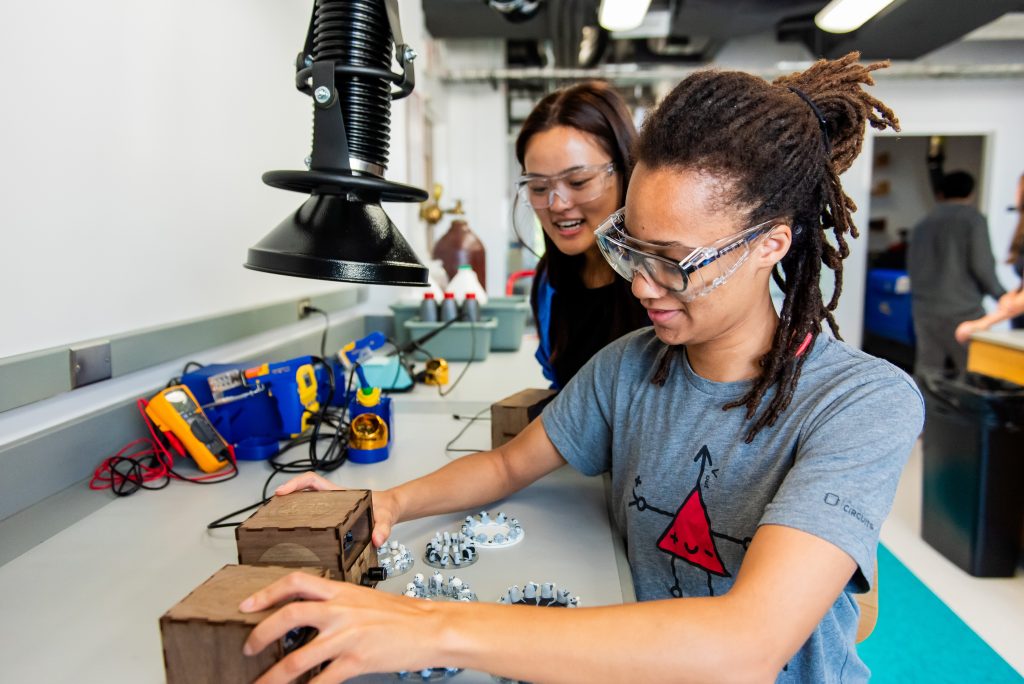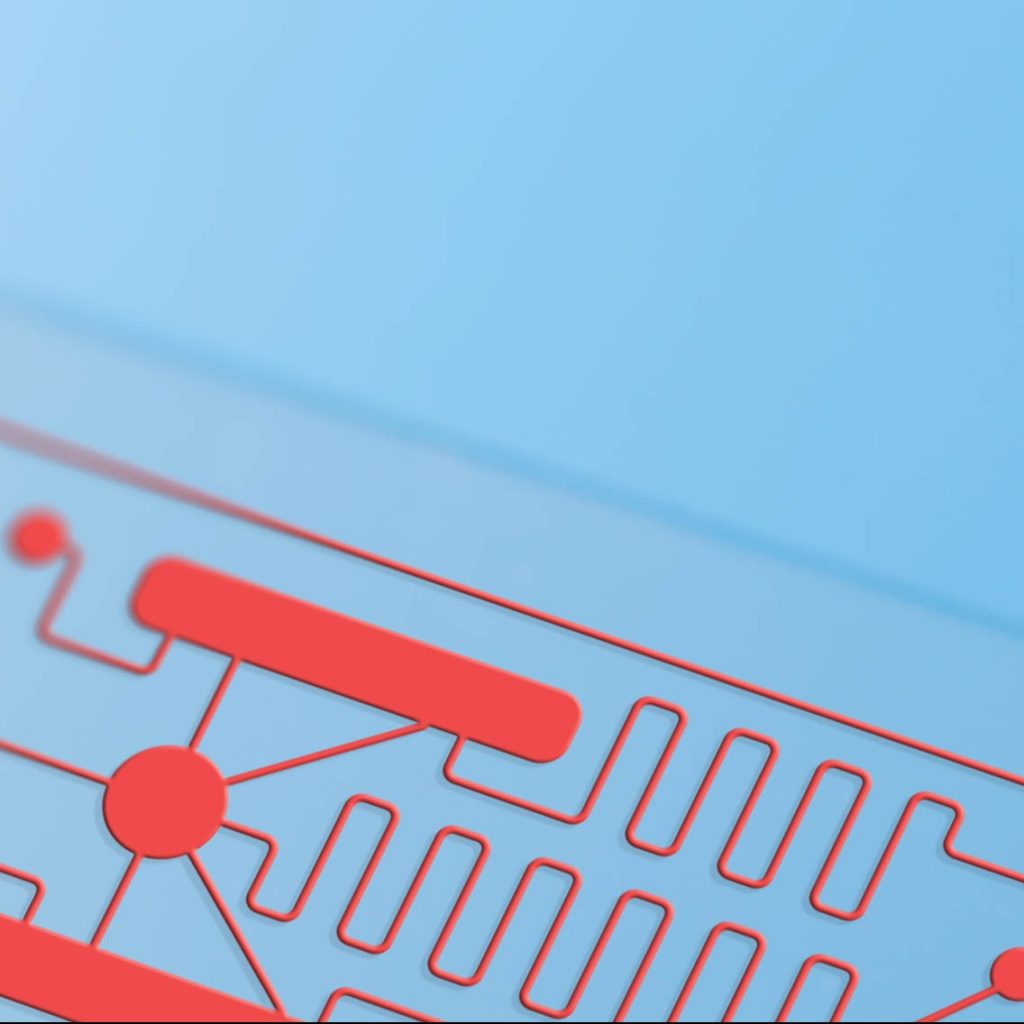Making the Makers:
How Increased Agency and Social Impact-Driven Makerspaces Grow Engineering Identity and Self-Efficacy in Marginalized Students
Synopsis of project aims:
- Baseline evaluation of past, informal non-social impact makerspace training, which includes a survey of past participants in an extracurricular maker training program at MIT (Makerlodge) that offers high student agency, but no social impact projects.
- A 4-year, longitudinal study of cohorts of undergraduates engaged in informal makerspace learning at MIT and UM, comparing groups that engage in social impact projects and those that do not.
- A 4-year, longitudinal study of formal, maker-oriented classes at MIT and UM, comparing cohorts that have social impact in student maker-oriented projects.
Project Team:
- Win Win Tjong
- Eileen Zhang
- Alayah W Hines
- Vera G McCoy
- Layal Barakat
- Susan Silbey
- Marty Culpepper
- Tolga Durak

Next-generation prototyping for microfluidics and lab-on-chip research and education
Synopsis of project aims:
The intent of this project is to (i) ascertain which technologies are fundamentally best suitable for microfluidic prototyping and manufacturing, (ii) generate engineering models and designs that enable the creation of system(s) that are safe and suitable for university researchers, (iii) realize a first generation prototype system that meets a critical set of researchers needs while enabling EHS to assess and plan for safe use of the technology and the policies/procedures that will govern the integration of this technology on campus.
Project Team:
- Jorge Nin
- Melissa Spencer
- Marty Culpepper
- Tolga Durak

Environmental Informatics and Neutron Activation Analysis for Addressing Heavy Metal Contamination Concerns at the Community/Individual Scales
Synopsis of project aims:
(1) Develop a Machine Learning (ML) method for automated gamma-ray spectral identification and uncertainty quantification of metal concentrations in NAA. We will apply the convolutional neural network-based method recently developed for gamma spectroscopy, and also explore other methods.
(2) Establish sampling, tracking and data management workflow. We will use a platform to generate the International Geo Sample Number (IGSN) identifier as well as create a database to store NAA data, and associated metadata (e.g., sampling time/locations, sample picture). All the datasets will be in a machine-readable format. In addition, we will explore how to address the privacy issues of such environmental datasets (e.g., anonymizing, rounding coordinates).
(3) Develop ML toolsets to identify and visualize the spatial patterns of metal concentrations at the regional/national scale, and to attribute their heterogeneity with environmental and anthropogenic factors. It leverages the existing environmental informatics framework that Professor Wainwright has developed.
Project Team:
- Livia Fernandes Barros
- Ed Lamere
- Haruko Wainwright
- Michael Short
- Tolga Durak
Integrated Biofabrication
Synopsis of project aims:
(1) Develop modular platform for safe, precise, repeatable multi-material bioprinting with different cell types and extracellular matrix materials
(2) Integrate bioprinting with other manufacturing tools in makerspaces to establish robust abiotic/biotic interfaces (ex: stretchable electronics)
(3) Develop platform technologies to modulate intercellular communication (mechanical, chemical, electrical) within biofabricated tissues, enabling tuning cell-cell and cell-matrix signaling in 3D space and time (i.e. 4D)
Project Team:
- Seyedeh Ferdows Afghah
- Vera G McCoy
- Annika Marschner
- Ritu Raman
- Marty Culpepper
- Tolga Durak

Effect of Biofilm Cohesiveness on Sediment Deposition in the Channel with Vegetation.
Synopsis of project aims:
- Develop methods to grow biofilm on plexiglass plates that can be transported to experiment channel.
- Run experiments to measure deposition rate over bed sections with and without biofilm and under different channel velocity and different density of model vegetation, consisting of an array of PVC cylinders.
- Develop method to efficiently decontaminate the water in the experiment channel after each experiment.
- Analyze the impact of vegetation-generated turbulence on the sediment deposition over the biofilm-coated bed
- Develop an integrated sediment transport model to represent erosion and deposition processes in the vegetated channel
Project Team:
- Hyoungchul Park
- Melanie Marketon
- Heidi Nepf
- Tolga Durak
Safe, Low-hazard and High-rate Sectioning of Polymer Perfused Tissues
Synopsis of project aims:
This project intends to generate the knowledge, technologies and best practices required to enable the rapid, safe and high-volume sectioning of tissues which are infused with polymers that keep the tissue chemically and morphologically stable. The project also intends to determine (1) if biological particulates accumulate in the lubricants at such an amount that the liquids must be treated as hazardous waste (2) which technologies minimize the creation of, and exposure to, these tissue waste products (3) how can the sectioning processing parameters be optimized for both sectioning as well as minimized particle generation (4) if this can be done without the use of lubricants, and, if not, are there environmentally friendly lubricants that can be used in the tissue processing.
Project Team:
- Hannah Gazdus
- Marty Culpepper
- Tolga Durak
Robust and scalable cladding surfaces to enhance boiling heat transfer performance in LWR conditions
Synopsis of project aims:
This project intends to develop resilient and effective micropillars texturing of fuel cladding material with ideal surface that has
- The highest possible critical heat flux (CHF) limit in LWR conditions.
- The highest possible heat transfer coefficient in LWR normal operating conditions, including:
- single-phase liquid forced convection,
- subcooled nucleate boiling,
- and saturated boiling (across different flow regimes, e.g., slug, churn, and annular flow) regimes.
- The highest possible Leidenfrost Point Temperature (LPT) in both droplet impingement and reflooding scenarios.
Project Team:
- Florian Chavagnat
- Matteo Bucci
- Melissa Spencer
- Mitch Galanek
- Tolga Durak


